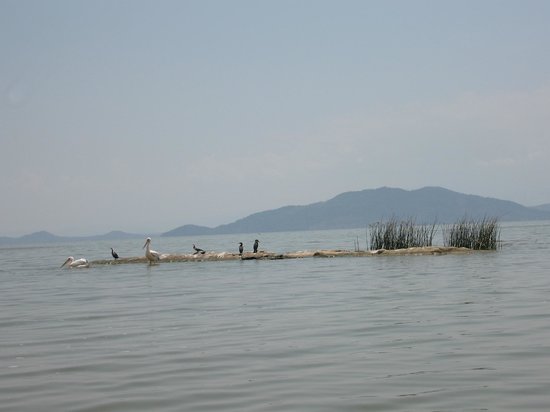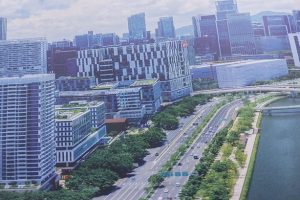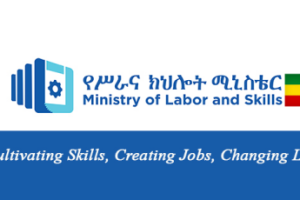
BY ADDISALEM MULAT
Lake Ziway is part of the Central Rift Valley (CRV) where Lakes Abijata, Langano, Shala and Chitu are located. It has a surface area of 434 km2, with an average and maximum depth of 2.5 and 9 m, respectively with a water volume of 1466 Mm3 and a shoreline length of 137 km.
Lake Ziway has two main tributaries, Meki River from the west and Ketar River from the East. It was repeatedly stated that the inflow of these rivers to Lake Ziway has decreased through the years resulting in less water availability in the lake. More importantly, the lake is connected to the vanishing Lake Abijata with Bulbula River, which flows out from Lake Ziway.
Of late, The Ethiopian Herald had a short stay with Abebe Getahun, a Professor of Aquatic Biology at the Department of Zoological Sciences, Addis Ababa University concerning Lake Ziway.
According to the Professor, Lake Ziway is a critical lake in several respects. It is a freshwater and productive lake as compared to the other CRV lakes. Moreover, its level and outflow determines the survival of the lake itself and the other terminal lake, Lake Abijata.
He continued that Lake Ziway is facing a huge load of sedimentation as a result of eroded soil carried by floods and rivers flowing to Feeder Rivers from the eastern and western highlands. The fact of the sedimentation is revealed by the increase of the water level while there is reduction of water flow from the rivers on both sides of the lake (Meki and Ketar).
The problem is further exacerbated by excessive water abstraction for small scale irrigation around the lake and Tributary Rivers.
It is also important to note that the average depth of Lake Ziway is only 2.5 meters and given the high rate of degradation of the watershed and hence runoff, there is high risk of sedimentation and further reduction of the depth and volume of the water of the lake is expected.
Aside from problems related to decreasing water volume of the lake, water abstraction started to induce salinity due to loses of freshwater from the lake, which is closely related to the reduction in the lake’s depth.
The ultimate and major driving forces behind these land use land cover changes and the impacts on the lake natural condition are anthropogenic factors such as population growth, land policy changes and deforestation. Increasing demands for more land and water resources, i.e., land for settlements and cultivation, wood for fuel and charcoals, and water for irrigation and municipal water supply, are the underlying causes for the observed changes on the watershed resources.
Moreover, the lake is faced with point and non-point source pollution that is changing the chemistry of the water and ultimately impacting the biodiversity of the lake. The lake, due to the unregulated inflow of nutrients, is getting to a state of eutrophication and even hypereutrophication.
It is largely agreed that the major cause for the accelerated water quality changes in Lake Ziway was identified as human impact in the catchment of the lake. Land use changes, particularly removal of vegetation cover, irrigation, diversion of inflows and industrial use of the water were taken as the cause for the decline in water quality that would have various implications on the biodiversity of the lake.
The application of agrochemicals and fertilizers due to intensification of irrigation practices around the lake has increased and affected the water chemistry of the lake.
Although the floriculture farms around Lake Ziway have long been considered as one of the environmental problems over Lake Ziway, several positive developments are underway in the Sher Ethiopia floriculture industry such as construction of artificial wetlands, biological control of pests, use of recycled water, limited water use from the lake by availing ground water etc.
Similar positive and encouraging arrangements (use of drip irrigation, water storage, waste treatment, rehabilitation of riparian vegetation, etc.) were also observed at the Castel winery farm. Such activities by the above enterprises should be encouraged, promoted and monitored by responsible Federal and Regional institutions.
A decline in the overall fish yield and composition of the catch has also been recorded in recent times in Lake Ziway because of the unregulated nature of the fisheries compounded with all the above environmental challenges of the lake.
Currently, the commercial fish catch composition has changed with a decline in Nile tilapia (Orechromis niloticus) but a progressive increase in the proportion of the exotic carps (Cyprinus carpio, and Carassius carassius). The catch composition of African cat fish, Clarias gariepinus, has also become significant replacing Nile tilapia.
Generally, the intensity of the anthropogenic pressure on Lake Ziway and the seriousness of the environmental issues have been felt by various stakeholders (Government, Non-Government and private sectors). Accordingly, several encouraging efforts, although not yet adequate, have been made to avert or control the environmental damages happening on the lake.
As to Prof. Abebe, improving the vegetation cover of the upstream of Ketar and Meki Rivers entails planting trees along the river courses in the upper basin to reduce the runoff and erosion through Bamboo and other plantations.
This process enhances the hydrological cycle; whereby rainwater is facilitated to sip into the ground to flow out as springs joining the rivers. The improvement of vegetation cover needs institutional development to realize it.
More often than not under population pressure, farmers encroach on existing forests or bush lands in search of cultivable land for growing crops. The need for agricultural land induces the clearing of land down to riverbanks including steep slopes.
Clearing of the vegetation destroys the biodiversity and exposes the land to heavy erosion. Thus, the factor behind the destruction of the natural environment and cultivation of land, which is uncultivable under normal circumstances, is the difficulty of obtaining alternatives means of income.
“If the alternative means of livelihood or income source is provided or availed, the expansion of agricultural land at the expense of the natural environment would be reduced. Alternatively, the efforts to restore the vegetation cover without providing another means of livelihood would eventually expose the vegetation to dangers of destruction.” he wrapped up.
The Ethiopian Herald January 6/2021





